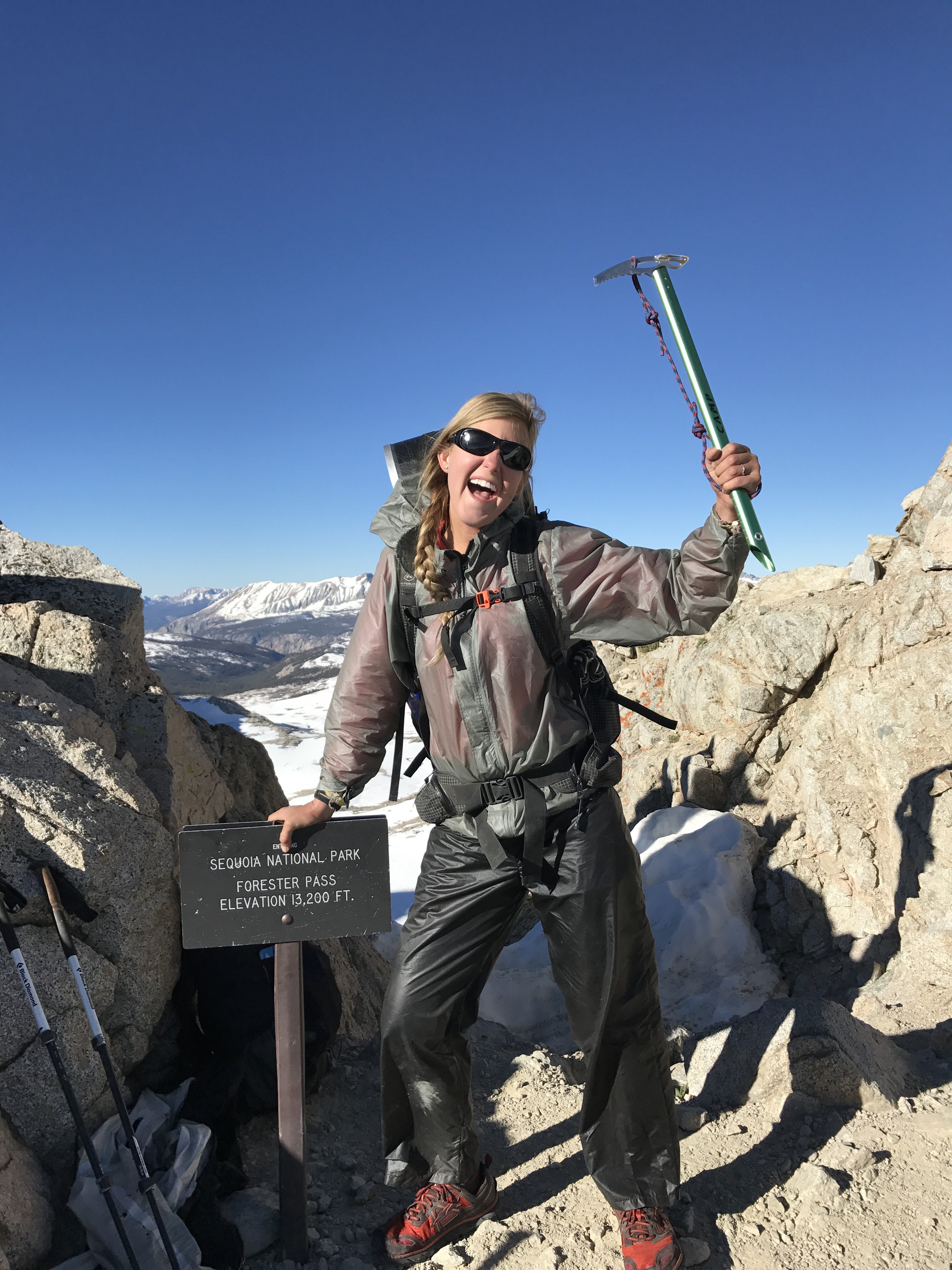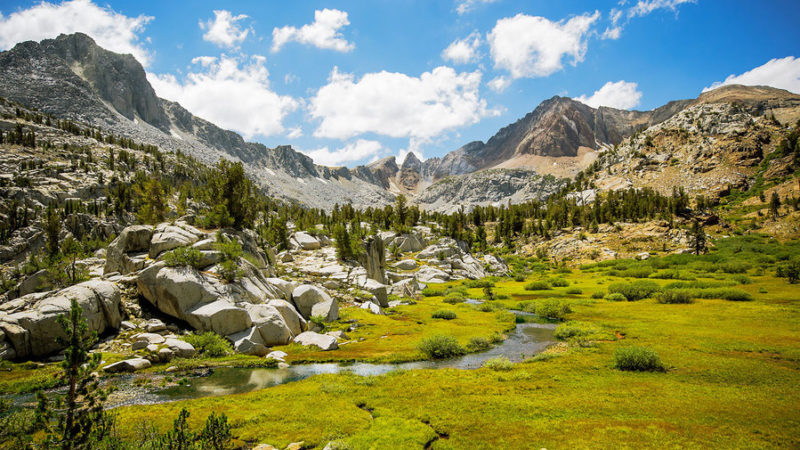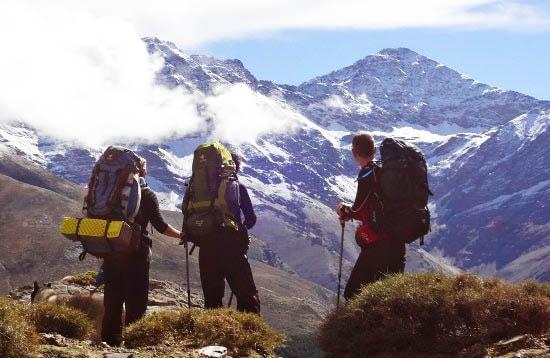Mountain Climbing with the Wizard
Poll
 | 3 votes (100%) | ||
| No votes (0%) | |||
| No votes (0%) | |||
 | 1 vote (33.33%) | ||
 | 1 vote (33.33%) | ||
| No votes (0%) | |||
| No votes (0%) | |||
| No votes (0%) | |||
| No votes (0%) | |||
| No votes (0%) |
3 members have voted
| September 6th, 2018 at 9:15:20 PM permalink | |
| Evenbob Member since: Oct 24, 2012 Threads: 146 Posts: 25011 |
I live at 400' so when I go to Vegas I can really feel choked for air if I do any walking. I get used to it after about a week, but I really don't like it. If you take a risk, you may lose. If you never take a risk, you will always lose. |
| September 7th, 2018 at 12:20:14 AM permalink | |
| Pacomartin Member since: Oct 24, 2012 Threads: 1068 Posts: 12569 |
If you live at 5,750' you have 20% less pressure than someone at sea level, while at 10,800' you have 33% less pressure. It is easy to believe that a person who changes from 20% less to 33% less will already be partly acclimatized. But you live at 3,000' so you are only 10% less pressure than sea level. You wonder how much of your basic biological functions can change with only 10%. |
| September 7th, 2018 at 1:55:12 AM permalink | |
| Evenbob Member since: Oct 24, 2012 Threads: 146 Posts: 25011 |
I only notice it on long walks in Vegas. And because I'm in my 60's. But if I'm there 10 days it's gone when I leave. If you take a risk, you may lose. If you never take a risk, you will always lose. |
| September 7th, 2018 at 3:26:23 AM permalink | |
| Fleastiff Member since: Oct 27, 2012 Threads: 62 Posts: 7831 | I wonder if high altitude dwellers ever get the bends at sea level or suffer other ill effects of too much oxygen? Many high altitude hotels maintain oxygen tanks for emergency use even though injuries occur during reperfusion more often than during desaturation. I wonder if Denver residents can join the Mile High Club via a motel room rather than the usual activity in an airplane? Eons ago I flew with a pilot who had cracked up an entire restaurant crowd when awarding a Mile High Club certificate to a 43 year old male and an 18 year old female that had "qualified" in the back seat of a Cessna 182. It seems humans are incredibly adaptable in basic physiology as far as oxygen levels in the blood and brain. As to walking Broadway, I knew three guys who did that decades ago one Saturday morning. They also did it giving wolf whistles to underage girls so it was not just exercise but was dangerous exercise. Life in Manhattan was fun back then..... if you had money. I imagine its pretty much the same way now, just a far higher amount of money is needed, though I understand the Dinty Moore bars still exist. A full meal on the cheap as long as you keep swilling beer. |
| September 7th, 2018 at 6:41:20 AM permalink | |
| Pacomartin Member since: Oct 24, 2012 Threads: 1068 Posts: 12569 |
Well first of all the bends are caused by too much nitrogen, not too much oxygen. Today we associate the bends with 4X or 5X normal atmospheric pressure when you are SCUBA diving. Historically it was associated with workers on the Brooklyn Bridge who spend 8 hours working at probably 2X normal atmospheric pressure. If you have been SCUBA diving for several days you should wait a day before getting in a jet which is normally pressurized at equivalent of 6000' to 8000' atmospheres. So I suppose if you have been SCUBA diving in Mexico and you drive home to Falstaff AZ in less than 6 hours (altitude 7000') then you are vulnerable. But I doubt that you could have a problem from descending from high altitude cities to sea level. You get a rush from the oxygen doping, but that is normally considered a bonus. |
| September 7th, 2018 at 9:32:01 AM permalink | |
| Wizard Administrator Member since: Oct 23, 2012 Threads: 239 Posts: 6095 |
I did the tour of the Olympic Training Center in Colorado Springs last summer. They had a huge gym where they could adjust the air pressure. The purpose was to trail athletes for the elevation of the stadium of whatever Olympics they were training for. Not suggesting you have access to such a facility, but I thought it was a clever idea. Knowledge is Good -- Emil Faber |
| September 7th, 2018 at 9:42:51 AM permalink | |
| Fleastiff Member since: Oct 27, 2012 Threads: 62 Posts: 7831 | True and it is also associated with that dissolved nitrogen boiling out of the blood not into it. So 'bends' was really an incorrect term to use. I merely meant do high altitude dwellers feel untoward effects of too much oxygen. There are 'oxygen bars' all over the nightlife oriented areas but I don't know if those are effective to actually dissolve additional oxygen into the blood. I know people do use low pressure chambers at sporting events for emergency medicine and for improved performance. Hyperbaric chambers are used in Europe for a great many conditions but in the USA for a relatively few. |
| November 11th, 2018 at 2:17:22 PM permalink | |
| Evenbob Member since: Oct 24, 2012 Threads: 146 Posts: 25011 | Mike, I have you and this thread to blame from my new obsession with hiking videos. I have been watching them for at least 90 min a day since the middle of July. I love it. My faves are Dixie, (Homemade Wanderlust, she's a cool chick), Darwin, IBTAT, hurlgoathiker, Whimsical Woman, Nightcrawler, Jay Sets Out and few others. The 3 main trails are Appalachian Trail, Pacific Crest Trail and Continental Divide Trail. PCT is the most beautiful after you get to the Sierra's. The rest of it north is just gorgeous. I'm hooked on the experiences of these athletes, and talk to some of them on a regular basis. I blame you. This is Dixie. I gave her advice on her ingrown toenails when she was on the trail this summer.       If you take a risk, you may lose. If you never take a risk, you will always lose. |
| November 11th, 2018 at 2:59:52 PM permalink | |
| Wizard Administrator Member since: Oct 23, 2012 Threads: 239 Posts: 6095 |
I happily accept responsibility. That chick looks like my kind of woman -- athletic, strong, and adventurous. I probably said this before, but I'm hoping to do some big hiking adventures myself starting in 2020, until I get too old. 2020 is when my son graduates from high school, so I'll have just one 14-year-old left in the nest. It wouldn't hurt for me to come into some more income to justify not working months at a time. p.s. Have you seen my little climbing resume page? Knowledge is Good -- Emil Faber |
| November 11th, 2018 at 3:09:36 PM permalink | |
| Evenbob Member since: Oct 24, 2012 Threads: 146 Posts: 25011 |
My advice would be the PCT and skip the desert part. Takes 40 days, not worth it. Start about 100 miles before the Sierra's begin, that's the best terrain and views all the way to Canada. The AP is a hard trail and can be very boring and over populated with hikers of all kinds. Hot and mosquitoey too. And rainy a lot. 'Embrace the suck' is the motto on the AT.. Lot's of Lime disease ticks (I saw 2 hikers get it just this summer). If you take a risk, you may lose. If you never take a risk, you will always lose. |

